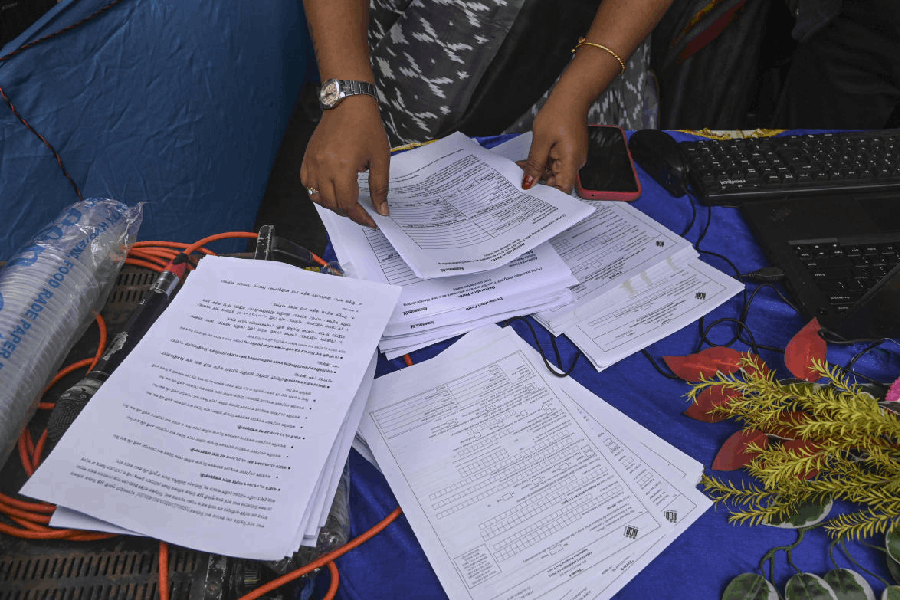From July onwards, investors would have to pay stamp duty on the purchase and transfer of shares and mutual funds. The government had introduced the changes to the Stamp Duty Act last year by introducing a uniform rate of stamp duty across the country.
The levy comes in uncertain times when interest rates are coming down with expectations of an average rate of around 4-5 per cent on fixed deposits in the near term. Fixed deposit investors mulling a switch to mutual funds for better returns would now have to factor in the additional cost at the time of purchase. The impact will be more prominent for institutional investors with short investment horizons such as banks and corporate houses that invest in liquid and overnight schemes.
Explaining the rationale for a uniform duty structure, the finance ministry said in a statement that the erstwhile system of collection of stamp duty on securities market transactions led to multiple rates for the same instrument, resulting in jurisdictional disputes, raising transaction costs and hurting capital formation. Stamp duty on securities varied across states. With the changes, a legal and institutional mechanism will now allow states to collect a uniform stamp duty on security market instruments.
This levy was set for introduction in January this year, but its introduction was postponed twice — first to April 1, 2020 and then again to July 1, 2020.
Applicability
For mutual fund investors, stamp duty will be applicable on fresh purchases, SIP instalments (including SIP registered prior to the applicable date), switch-ins (change of schemes), STP switch-ins, dividend reinvestment transactions and dividend sweeps at the rate of 0.005 per cent. For transfer of units from one demat account to another, off market transfers etc, the applicable rate charged by the depository would be 0.015 per cent. Stamp duty will also be applicable for units held in the physical mode. There are, however, certain exemptions:
⦾ Stamp duty will not be applicable on redemption, switch-outs, STP switch-outs
⦾ Stamp duty will not be applicable on conversion of units from the physical to the demat mode
⦾ It will not be applicable on transfer from broker to investor account
⦾ On dividend reinvestment, duty will be deducted on the dividend amount (less applicable TDS if any) and units would be created for the balance amount.
Calculation and impact
Consider an individual with an investment plan of Rs 1 lakh per month for 12 months through an SIP route. The stamp duty on each SIP investment works out to Rs 5 [Rs 100,000x 0.005 per cent]. The total stamp duty on 12 instalments would be Rs 60. If the same amount is invested lump sum, the stamp duty amount will also remain same at Rs 60 [Rs 12,00,000 x 0.005 per cent]. Suppose the NAV per unit is Rs 1,000. In that case, the unit allotted is 99.995.
“Stamp duty will be deducted from the initial investment amount and the balance will be invested in the mutual fund scheme. To this extent, the investor would receive a lower number of units on investment,” said Sameer Kaul, MD and CEO, TrustPlutus Wealth Managers (India).
“Stamp duty is a one-time charge levied at the time of investment and as the holding period increases, the return impact, in percentage terms on an annualised basis becomes negligible in just 30 days,” said N.S. Venkatesh, chief executive of Amfi.
The impact, however, will be more prominent if the investment horizon is shorter. If it’s one month, the annualised cost would rise to 0.06 per cent and if it’s one week, the annualised cost impact would be 0.26 per cent. If the investment time frame is one day, the cost works out as 1.82 per cent.
“An investor that typically comes into overnight/liquid funds, for shorter periods where they park money for 1-2 days, will see a significant impact to the overall returns. Most retail investor portfolios will be largely unaffected as their investment horizon is typically longer in both debt and equity funds,” said Kaustubh Belapurkar, director-manager research, Morningstar.
The timing
The central government has said that the amendments to the Stamp Duty Act and the rates were in public domain since February 2019 and the market had enough time to prepare for its implementation from July despite the lockdown on account of the pandemic.
“While one can argue with regard to the date from which the stamp duty levy should have been implemented, one needs to also take into account the fact that this has already been postponed twice. Also, the government is at present hard pressed to raise revenue given the impact of the pandemic,” said Kaul.
The mutual fund industry had mobilised funds worth around Rs 188 lakh crore in 2019-20 and a straight 0.005 per cent of that works out to be around Rs 940 crore as potential annual earnings. If we look at the NSE turnover last year, it was around Rs 89.98 lakh crore and with the stamp duty the exchequer earnings at the specified rate could be around Rs 450 crore.
Investor awareness
As the levy amount works out to be nominal, retail mutual fund investors should not be concerned. “The important aspect to keep in mind is that if an investor has a long-term investment horizon, the impact of stamp duty is insignificant,” said Kaul.
But one has to be careful about selecting the right funds as by switching from one scheme to another, they will end up paying stamp duty more than once on the same investment amount.











